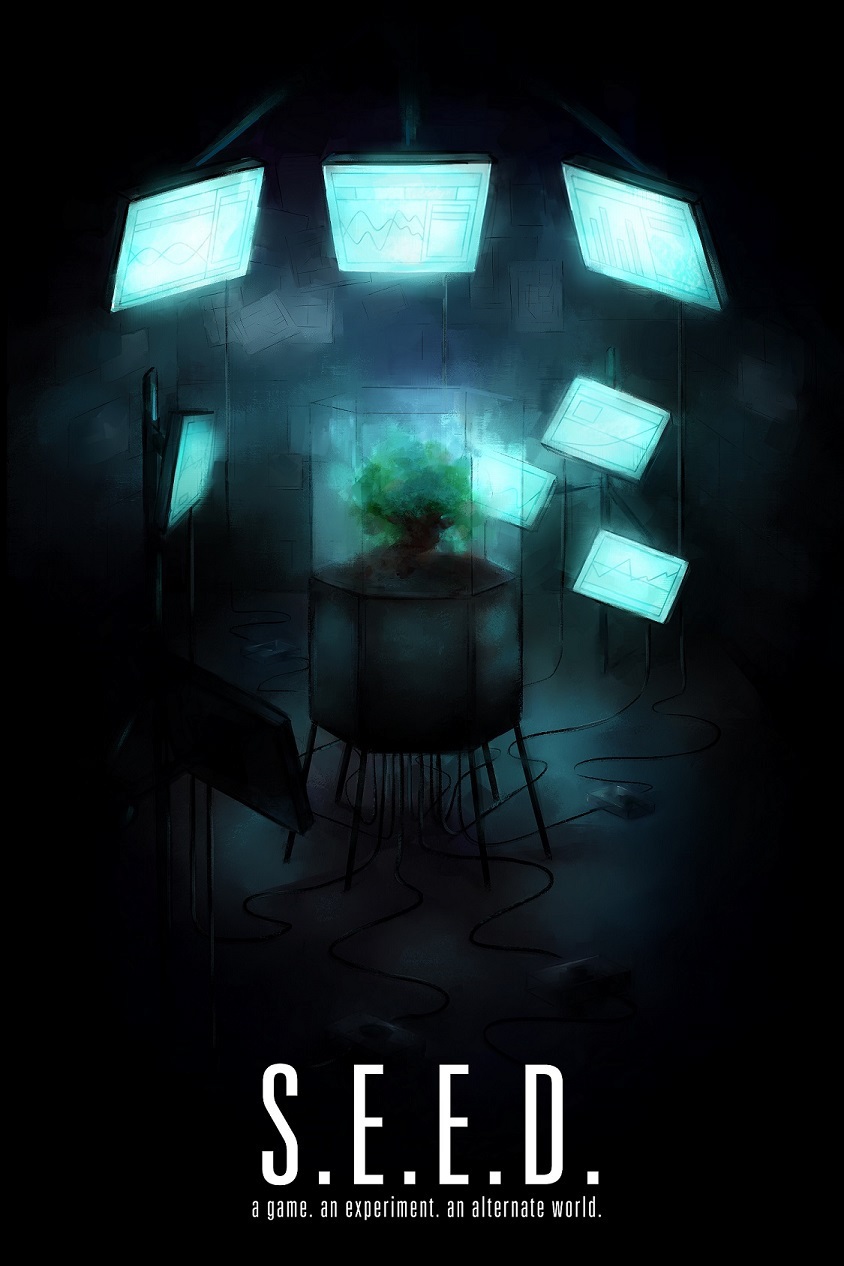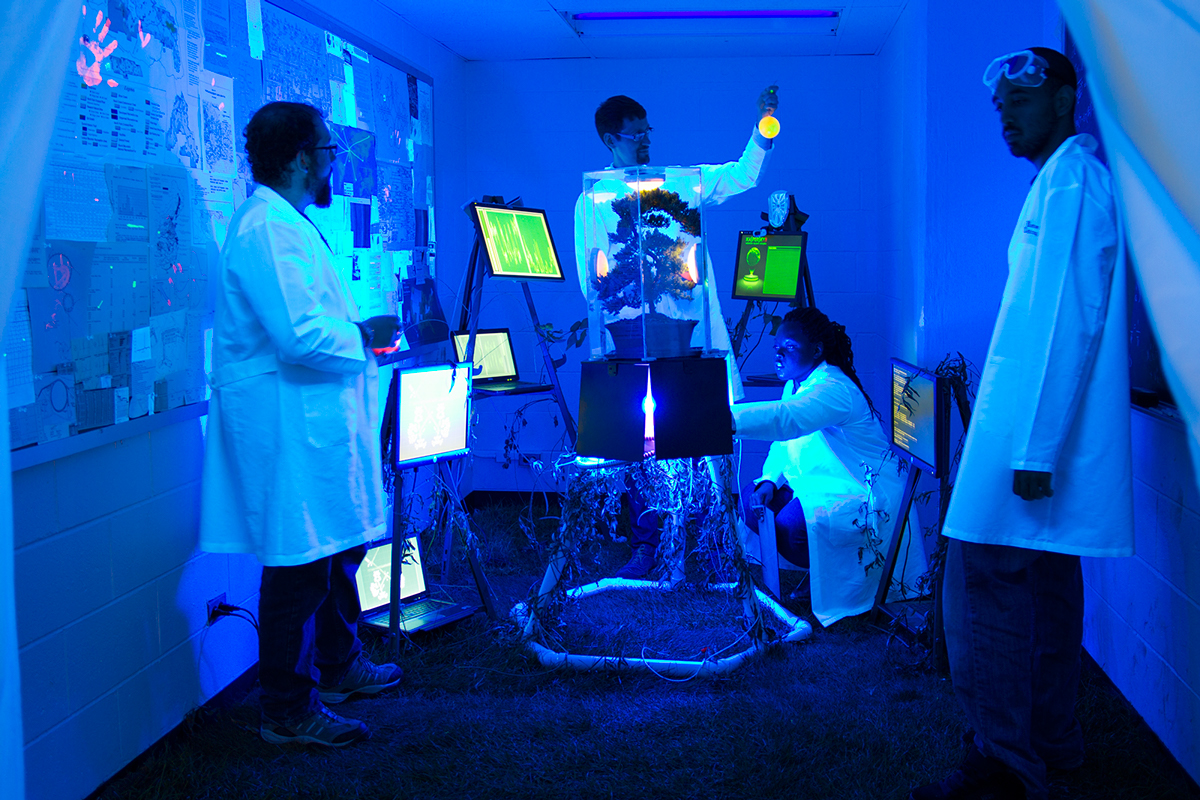
What was S.E.E.D?
S.E.E.D. was an Alternate Reality Game designed to guide Southside Chicago highschoolers through a STEM (Science, Technology, Engineering, and Math) curriculum. The three-week-long game, designed to engage with 70 Chicago Southside youth, was created by the Game Changer Chicago Design Lab at the University of Chicago in 2014. S.E.E.D. featured a science fiction story and encouraged teamwork to solve puzzles across a variety of digital and analogue media which included social networks, an AR puzzle game called Power Spots played on mobile devices, and a variety of board games. It was followed by Hexacago Health Academy, an integrated two-week game design workshop in which students used what they learned in S.E.E.D. along with new instruction in transmedia storytelling, procedural rhetoric, and game design to create their own serious games.
What is S.E.E.D.?
S.E.E.D was covered in Fast Company magazine and Hyde Park Herald.
My Roles
During the S.E.E.D. project, I created a number of media assets, implemented those assets, and was a lead writer for the writing team that designed the narrative. I participated in the scripting and acting of short films for the game and was also the lead set designer for the live action dramatic portions of the narrative. Finally, I taught classes during the summer program that followed. I helped design and create both board and transmedia games, a partial list includes: a card/board designed to teach economic inequalities, a puzzle that involved tuning radios to the correct frequency to uncover secret messages, and "hacking" puzzles that required students to social engineer their way into a secure network.


Youth play the AR game Powerspots, designed for S.E.E.D.

The Narrative
S.E.E.D was a sci-fi transmedia narrative told through locative media, audio and video, email, computer games, social media, live-action guerilla- and improv-style performance and text messages. The Temporal Archivists, a group of science-historians that catalog transmissions and artifacts from the future, receive a message through S.E.E.D technology alerting them that a cataclysmic event will take place in the near future. A group of Chicago-youth determined to be capable of either destroying or saving the world is put together to solve puzzles and make use of S.E.E.D, technology to save the world, but are the Archivists really who they say they are? And can The Scattering, a resistance group from the future that may be composed of the players themselves, as adults, be trusted?
The introduction video shown to youth at the onset of the S.E.E.D. narrative.
Gameplay
Each week, teams would come together and research STEM topics surrounding potential world-ending scenarios (such as global warming or natural resource depletion). Teams competed in debates around these topics. Additionally, players social engineered their way into private networks owned by the villains of the narrative, cracked and wrote in cryptographs, and played a networked scavenger hunt called Powerspots using iPads. These moments were integrated into the narrative of S.E.E.D. and solving the puzzles revealed clues about the mysterious sci-fi narrative.
S.E.E.D. Design Team
GCC Co-founder: Patrick Jagoda & Melissa Gilliam
Production Manager & Lead Game Designer: Ashlyn Sparrow
Narrative Designer: Patrick Jagoda and Seed Lynn
Game Designers: Megan Macklin, Peter McDonald, Christopher Russell, Keith S. Wilson, Nate Crumpley, Philip Ehrenberg, Leslie Gailloud, Bea Malsky, Julius Stein
Research Manager: Brandon Hill
Logistics: Angela Heimberger
GCC Co-founder: Patrick Jagoda & Melissa Gilliam
Production Manager & Lead Game Designer: Ashlyn Sparrow
Narrative Designer: Patrick Jagoda and Seed Lynn
Game Designers: Megan Macklin, Peter McDonald, Christopher Russell, Keith S. Wilson, Nate Crumpley, Philip Ehrenberg, Leslie Gailloud, Bea Malsky, Julius Stein
Research Manager: Brandon Hill
Logistics: Angela Heimberger
S.E.E.D. was made possible by John D. and Catherine T. MacArthur Foundation, the Neubauer Family Collegium for Culture and Society, Aramark Higher Education, and the University of Chicago Humanities Division and Humanities Visiting Committee


